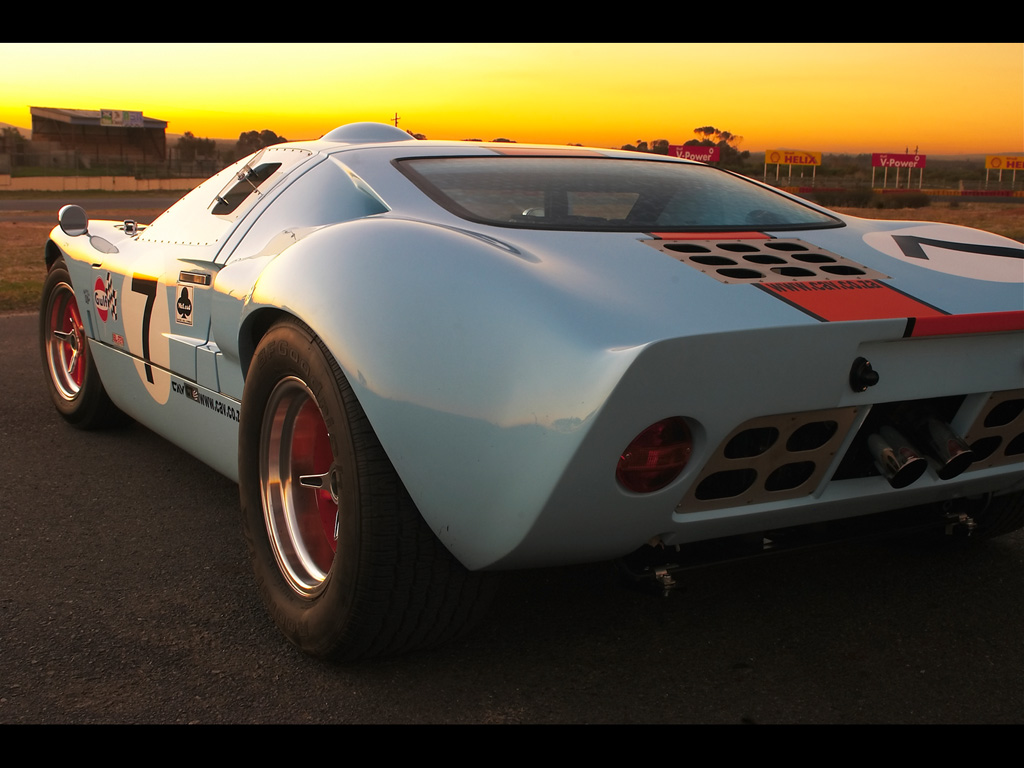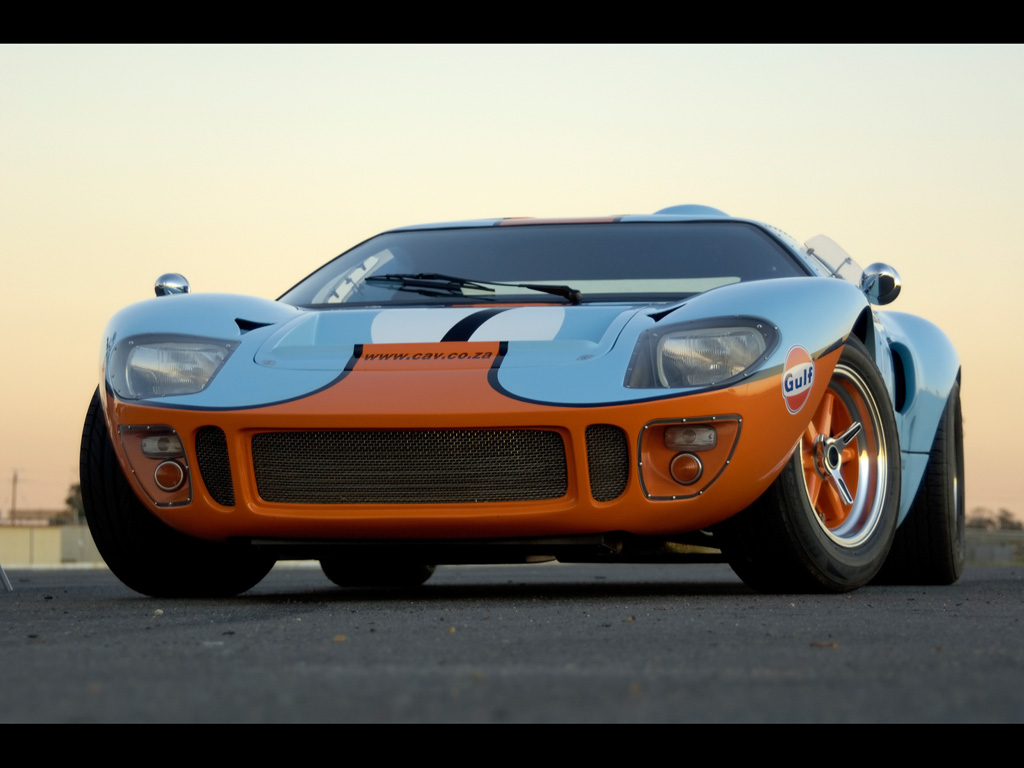2008 Auto Futura CAV GT
|
Price |
-- |
Production |
-- | ||
|
Engine |
5.6 liter Ford V8 |
Weight |
-- | ||
|
Aspiration |
-- |
Torque |
-- | ||
|
HP |
450 hp |
HP/Weight |
-- | ||
|
HP/Liter |
80.4 hp per liter |
1/4 mile |
-- | ||
|
0-62 mph |
-- |
Top Speed |
-- |
(from CAV Press Release) The CAV GT is performance and power refined in a seamless body. Expect the same gut-wrenching experience and white-knuckle acceleration on road and track. Expect that, and more.
It takes time and
dedication to build a CAV GT. Six hundred man-hours is devoted to
the development of each vehicle from the construction of the chassis
to the time it leaves our factory.
Our committed team shares a vision to manufacture a quality product
that will provide pleasure and pride to its owners. In addition to
our staff based at Westlake, Cape Town, we employ subcontractors who
share our work ethic and exacting standards.
To achieve the quality we strive for in every CAV GT each step of
the manufacturing process is meticulously planned. Our extensive R&D
has enabled us to create enhancements to the CAV GT for improved
road and track performance.
The foundation of the CAV GT begins with the stainless steel
monocoque chassis. Each chassis is tig welded on a jig to maintain
its structural design integrity and cleaned and sealed prior to its
placement in the assembly site.
The life of each CAV GT is ushered in when the chassis plate is
fitted and its identity takes form. Its development then progresses
to the bodyfitting stage at which point its vinylester body will be
placed over the chassis nucleus. Vinyelester is stronger and more
stable than conventional polyester resin.
The perfect body is created through a specialist shaping and
spraying process that is subcontracted to a team dedicated solely to
this outcome. The body is baked several times so that it is cured
and stable before a final spray painting. The whole process takes
200 man-hours before it is ready to leave the paint shop. On its
return to our factory, the body panels are removed and carefully
stored.
At this stage the assembly team will construct the vehicle from its
component parts. The suspension, braking, cooling, fuel and
electrical systems are fixed, tested, and re-checked. Interior
finishes are added and the custom-made seats fitted. Stored body
panels are re-fitted, adjusted and the windscreens bonded into
place. The vehicle is polished and tested one last time before it is
ready for shipping.
On average, two cars can be shipped in standard 20-foot containers
placed on specially designed frames. These secure the cars for their
journey across the oceans to ensure they arrive at their
destinations in the immaculate condition they left our factory.
Chassis
The CAV GT has a tig-welded,
stainless-steel monocoque chassis designed for torsional stiffness.
Its integrity is ensured through CNC punched and bent panels and
laser cut parts.
The chassis is welded in jigs and its dimensional accuracy is
superb. It features an integral roll over bar and side impact
protection bars. Every CAV GT chassis is manufactured to accept a
bolt-in roll cage for racing purposes.
Suspension
The front suspension
comprises unequal length offset A-frame wishbones with an adjustable
anti-roll bar linkage. Caster, camber and toe-in are all easily
adjustable.
The suspension geometry was re-designed to ensure superb handling
both on road and track with the benefit of bump steer adjustment.
The lower wishbone is braced. The front uprights are CNC machined
from billet aluminium.
The rear suspension geometry consists of independent double trailing
links with inverted A-frame wishbones, upper transverse links and an
adjustable anti-roll bar linkage coupled to cast aluminium uprights.
The suspension design is true to the original without compromising
on handling. The CAV GT features a compact, lightweight handbrake
caliper that helps to reduce unsprung mass.
The CAV GT has been perfected for racing conditions and the rear
suspension now features 16 adjustable rose-joints.
Body
The body of a CAV GT is
made from vinyl ester resin which is stronger and more stable than
conventional polyester resin.
Each body is set up on a chassis in our workshop before it goes to
the shaping department, where the car is hand sculptured in a
painstaking process that takes around two hundred man-hours to
complete.
The body and chassis stay together which ensures that the gapping
and the lines remain correct.
In order to achieve the quality of paint finish demanded, the car
goes through an exhaustive pre-spraying preparation process.
Interior
The interior of the CAV GT is designed for maximum comfort. A full leather interior runs through the seats, padded dashboard, steering wheel, consol, roof lining and doors.
Ergonomically sound
leather-clad adjustable seats feature the original brass grommets
and soundproof insulation is provided by top grade carpeting.
Additional comforts include air conditioning and increased head and
legroom to accommodate anyone up to 64. An adjustable pedal box
allows for flexibility to the inside space.
Original style Smiths gauges complete with chrome bezel and Lucas
switch gear recreate the experience of the 1960s design.
Engine
The CAV GT is designed
to accept a Ford V8 small block 289/302 cid. A 351 can also be used.
Induction Holley 4 barrel or 4 x 48IDF Webers or Injection System.
Recommended power unit 342 stroker with approximately 450bhp SAE.
Fuel injection system on request.
Electronic breakerless ignition is recommended.
Clutch
For Street racing one
would use a "Standard Woven Clutchplate" as this gives a smooth
engagement.
For higher torque applications, as in racing, a copper clutch is
used. They range in configuration from 4 button to 6 button plates.
The 4 button would tend towards a smother action while the 6 button
would have a higher torque capacity with a much sharper action.
Whatever the configuration they come with cushioned centres.
Diaphragm type pressure plates are used with upgraded heavy duty
diaphragms.
Auto Futura may be reached at their website



